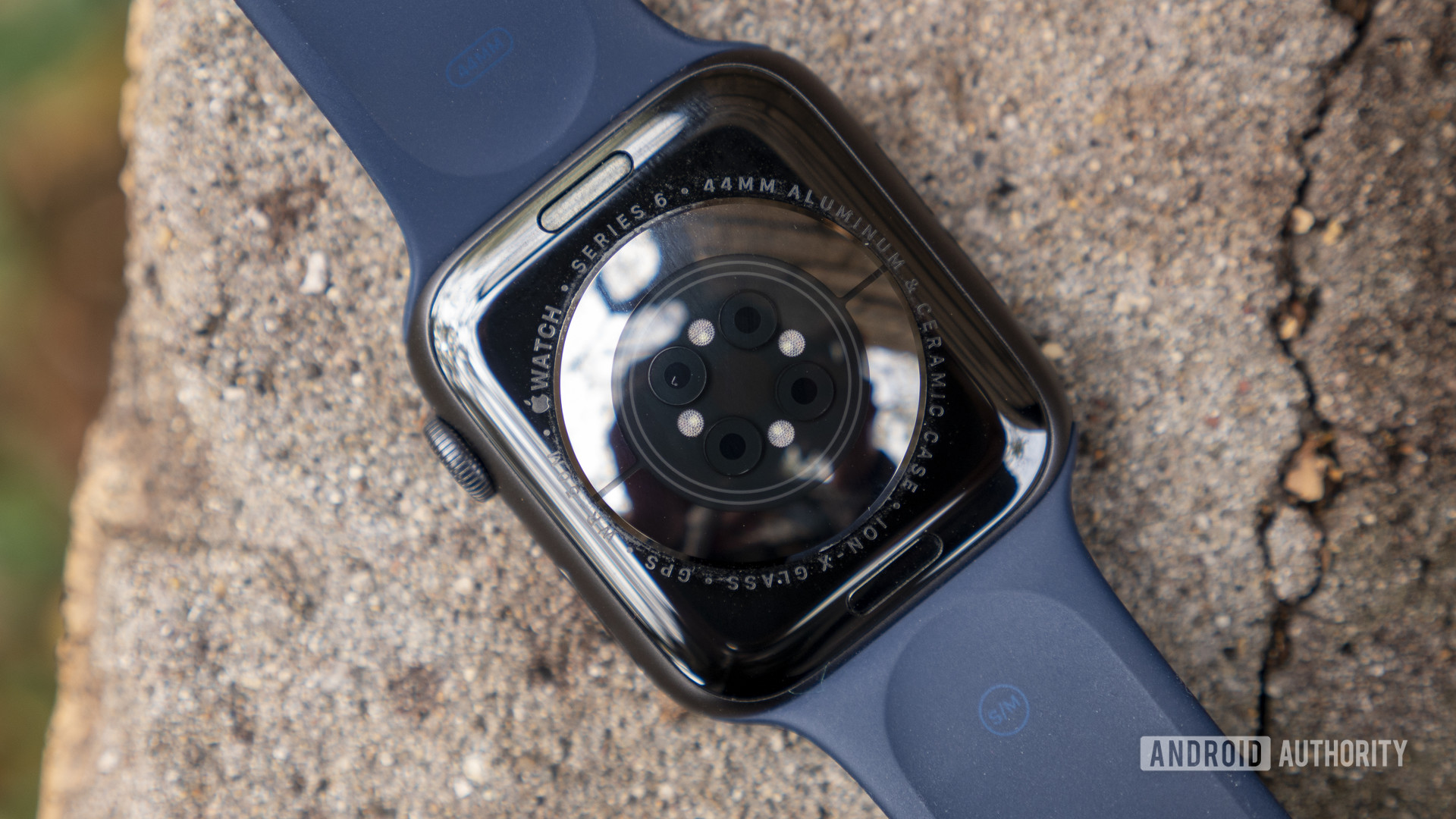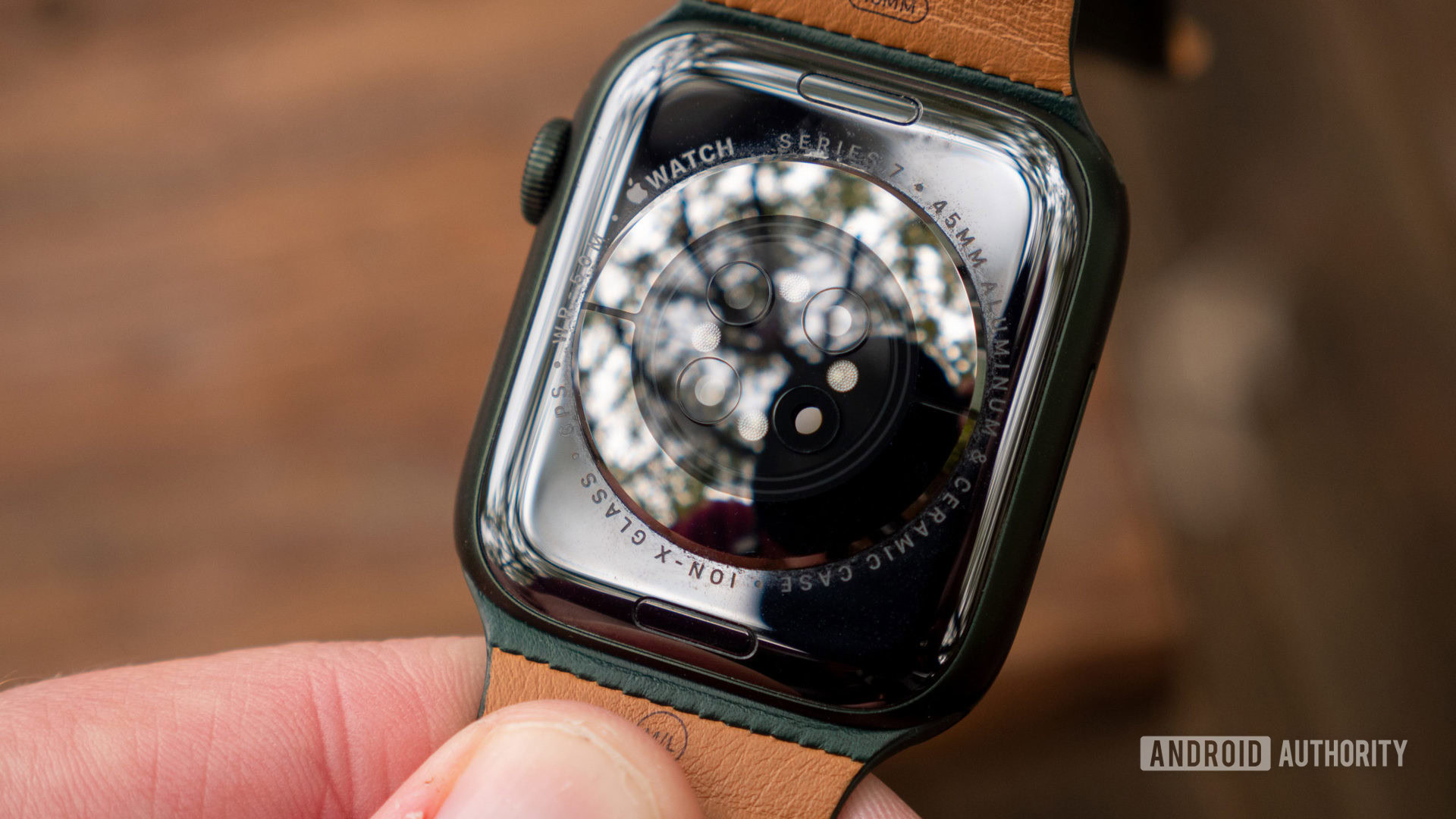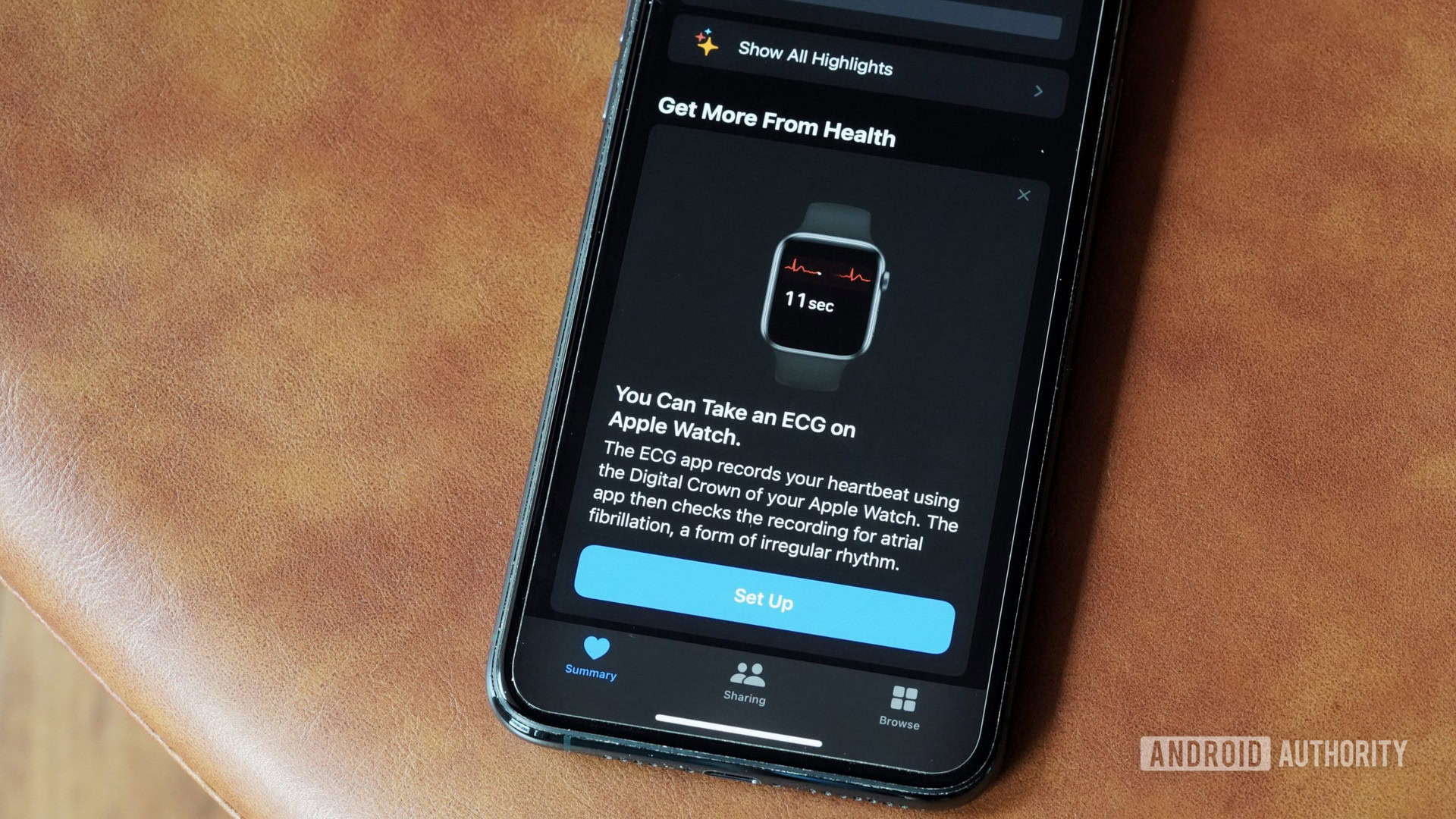Affiliate links on Android Authority may earn us a commission. Learn more.
What the Apple Watch ECG App does (and how to use it)
The Apple Watch’s electrocardiogram feature (ECG) can provide far more accurate heart rate readings than typical optical sensors and could even identify potential arrhythmias. But just how accurate is the ECG on the Apple Watch? How do you access it? And what do you do with that information? Read on, and we’ll explore the answers.
Read more: What is ECG, and why does it matter?
What does the Apple Watch ECG app do?
An electrocardiogram measures electrical signals from the heart. Since your heart is a muscle, it requires an electrical impulse to trigger contractions. As a result, it is possible for an electrocardiogram to measure the timing and strength of your heart rate. The result is a far more accurate reading than would be possible with an optical monitor. The ECG app compatible with the Apple Watch Series 4, Series 5, Series 6, and Series 7 provides users with on the spot ECG readings.
Using your Apple Watch ECG app, you can determine the following:
- Irregular heart beat rhythms indicative of atrial fibrillation, or AFib
- You exact heart rate at any given time
Most importantly, the Apple Watch ECG app records your heart rate to look for irregularities between the rhythms of the upper and lower chambers of the heart. Irregularities of heart beat rhythm can suggest a user is experience AFib, a serious condition that can lead to heart attack or stroke.
The Apple Watch ECG app cannot determine the following:
- Heart attacks
- Blood clots or a stroke
- Other heart-related conditions such as congestive heart failure, high cholesterol, high blood pressure or other forms of arrhythmia
The Apple Watch ECG app is not intended to replace medical care or professional assessment. If you experience chest pain, tightness or pressure, or symptoms you think make be a heart attack, contact emergency services immediately.
Our verdict: Apple Watch Series 6 review | Apple Watch Series 7 review

Take on the spot ECG readings
In short, the Apple Watch ECG app allows you to take on-demand readings and record the results in Apple’s robust Health app. This allows users to keep tabs on their heart health and can cue individuals to seek medical assistance. Possible results in the ECG app include the following:
- Sinus rhythm: This is a healthy pattern between 50 and 100BPM considered normal.
- Atrial fibrillation: This is an irregular and possibly high pattern.
- Low or high heart rate: This is a heart rate under 50BPM or over 120BPM.
- Inconclusive: This means the recording can’t be classified.
- Poor recording: Unique to ECG version 2, this means the quality of the recording was not adequate to provide a classification.
Of course, the reading to look out for is “atrial fibrillation.” If this is your result, assess how you are feeling, and consider booking a visit to your physician. Keep in mind that many things can affect your heart rate, such as exercise, emotional stress, or alcohol consumption. For example, if you have just completed a workout, your heart rate may likely be high. The best time to take a reading is when you are otherwise calm.
Identify atrial fibrillation
Atrial fibrillation is a heart condition that can cause an irregular and possibly rapid heart rate. You may find that your resting heart rate is above 100 beats per minute. This can cause other symptoms such as dizziness, breathlessness, and tiredness. Using the Apple Watch ECG app, users can test their heart rate if they start to feel unwell. There are also different types of atrial fibrillation:
- Paroxysmal atrial fibrillation: Episodes that come and go
- Persistent atrial fibrillation: Lasting for seven days or more
- Long-standing persistent atrial fibrillation: Lasting for a year or longer
- Permanent atrial fibrillation
Seeing as atrial fibrillation can come and go, a doctor might fail to pick up symptoms during a visit. This is where having a device that can potentially flag symptoms becomes useful. The Apple Watch might also be able to identify other forms of tachycardia, such as atrial flutter. Atrial flutter is similar to atrial fibrillation but has a more organized/less chaotic waveform.
View and share information
Once you have completed an ECG reading, you can review your results in the Health app on your paired smartphone. The ECG waveform and its associated classifications will automatically save as well as any noted symptoms. From the Health app, you can even save a PDF of your results to share with your doctor. This makes the Apple Watch ECG especially useful in helping individuals share important data with their medical team.

Take cues to see your doctor
Thanks to the electrical heart rate monitor located on the back of the device and in the Digital Crown, the Apple Watch can provide an ECG “similar to a single-lead” ECG. This is not the same as the 12-lead ECG that doctors offer. The latter records signals from different angles across the heart to provide 12 separate waveforms.
It is important not to mistake the Apple Watch for a medical device. The Apple Watch ECG app should not be used to diagnose any condition as mentioned above. Despite Apple’s warnings, there is always potential for users to place too much stock in their readings.
The best way to think of the Apple Watch ECG app is as a cue to go and see a doctor.
How to set up the ECG Apple Watch app

To start using the ECG app on your Apple Watch, you first need to set it up in the Health app. This process will install the app on your device and provide it with the necessary permissions.
- Open Apple’s Health app and scroll down on the Summary screen until you see the ECG widget under Get More From Health. Tap Set Up.
- Follow the on-screen prompts which will include submitting your age. Unfortunately, the Apple Watch ECG app is not intended for those under the age of 22.
If you do not see the ECG widget on your Summary tab, scroll to and tap Heart > Electrocardiograms (ECG) > Set Up ECG App. Once you’ve gone through all the necessary steps, the Apple Watch ECG app will be installed and ready to use at any time.
Related: Fitbit vs Apple Watch: Which is the best ecosystem for you?
How to take an ECG reading on Apple Watch
Once you download the app, you can take an ECG reading at any time by opening the app from your watch itself. Apple advises that you do this “any time you feel symptoms such as a rapid or skipped heartbeat.” In other words, if you feel strange, it’s worth giving it a go. The ECG won’t be taking regular readings like the optical sensor, so you’ll need to actively take a reading when you want one.
- Launch the ECG app on your Apple Watch.
- Rest the arm wearing the watch on a table or your own leg. Try to move as little as possible.
- Place a finger from your opposite hand against the Digital Crown and wait until the app signals the process is finished. This should take 30 seconds.
The Apple Watch ECG app will determine which type of heart rhythm you have and display the results. You can also record symptoms you experienced at the time you decided to take a reading.
To see the actual heart rate chart that was plotted, alongside any previous recordings, open the Health app and go to Summary > Heart > Electrocardiogram (ECG).
See also: The best fitness trackers you can buy
Apple Watch ECG app FAQs
Like most advanced health sensors, the value of this feature is largely dependent on your personal needs. The average, healthy user doesn’t necessarily need such screening, while someone with a history of heart problems could benefit from the app more extensively. It’s important to note however, that the Apple Watch is one of the best smartwatches available, especially for iPhone users. It’s completely fair to buy an Apple Watch for its other merits and simply consider this feature an added bonus.
The ECG app makes it easy to share your readings with your doctor. You should share your results if you have any concerns about your heart health, receive concerning readings, or experience any concerning symptoms. Additionally, you can speak to your doctor about the usefulness of at-home readings in regards to your personal medical history. Like all tools, the Apple Watch ECG app can provide inaccurate results. It is important to trust your medical care to professionals.
Yes, an electrocardiogram can be called an ECG or an EKG.
While we have not conducted a side by side study for comparing ECG accuracy, a number of Apple alternatives also feature ECG sensors that have been approved by the FDA. This certification is an important distinction to look for when choosing a device based on its ECG capabilities.
If your Apple Watch ECG app is not working there are a number of solutions to try. First, make sure that your Digital Crown is clean and free of debris. If you still receive inconclusive results, check to see if you have the latest update on your device, or try restarting your iPhone and Apple Watch. Finally, you may need to uninstall and reinstall the ECG app.
The Apple Watch ECG app is a potentially useful tool, as long as it is used appropriately and with an understanding of precisely what it is and isn’t capable of providing. Additionally, the Apple Watch isn’t the only smartwatch with ECG capabilities. Check out the follow reviews to read more about alternative devices.